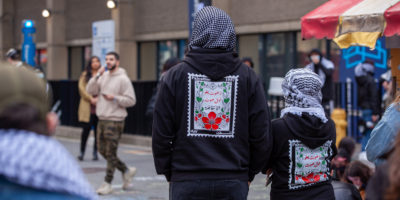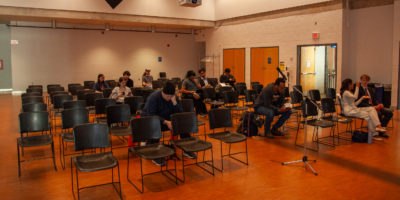By Valerie Dittrich
Last Wednesday was a cold, windy and overall unpleasant day to be outside for 10 hours. But you did it, Ryerson. You striked, you marched and you protested.
However, it was a long and frankly unnecessarily messy road to get here.
Since April, when a motion was brought up at the Ryerson Students’ Union (RSU) annual general meeting to make a one-day strike happen, we’ve had two main parties who both wanted to protest against Ontario Premier Doug Ford’s cuts to education. Those included a campus group called Ryerson Student Strike and our student unions: the RSU and the Continuing Education Students’ Association of Ryerson (CESAR).
They were in the company of We The Students RU, a collective of student groups across campus, which includes The Eyeopener, as well as student activists who are angry about Ford’s cuts.
Overall, it’s fair to say the two groups were fighting for a good cause.
But they failed to communicate and collaborate effectively.
Fast forward to September, Ryerson Student Strike (RSS), an independent organization made up of members mostly from Socialist Fightback, said that “the RSU executive has failed in fulfilling this mandate,” stated in an Oct. 9 post from the RSS Facebook page.
RSS took to campus campaigning for student group endorsement of the strike and eventually hosted a general assembly on Sept. 25, where they asked students to vote for or against it. The idea of a strike gained popularity largely due to RSS. The vote passed with 200 people for and only one against.
But the RSU and CESAR didn’t entirely agree with their approach, either. They often cited issues of accessibility when it came to a general assembly, as Ryerson is a commuter school and not everyone can make it to a physical vote. More importantly, RSS never confirmed the identities of the voters at the general assembly, so it remained unclear whether Ryerson students were the ones doing the voting.
The Eye published numerous stories detailing other ongoing disagreements on issues such as how to engage students, what to label the Nov. 6 day of action, how it should go down (a hard vs. soft picket), among other things.
The RSU’s participation was vital due to the fact that they have the money, power and membership behind them to get students on the ground to actually do the striking.
But when the disagreements kept arising, students saw ongoing conflict during the leadup to the strike.
RSU vice-president education Kwaku Agyemang told The Eye in October that during their meetings with RSS throughout the summer, RSS would “derail” when the two parties seemed to be making progress.
However, Hermes Azam, spokesperson for RSS and former president of Socialist Fightback, said the opposite after the Sept. 25 general assembly. He said it was the RSU that would “backtrack” on their commitments.
Since the beginning, the strike has been a whirlwind of back-and-forths. If the same passion, drive and goal behind all these organizations was to mobilize students and send a message to Doug Ford—why was it so hard to get on the same page?
The ordeal reached its climax when the RSS performed a sit-in in front of the RSU office on the third floor of the Student Campus Centre, demanding public support of the strike. It was met with little answers and eventually, the RSU voting down their second motion for supporting the strike during a Board of Directors meeting.
When we finally cleared the politics, the RSU put out a survey on asking their student membership whether they wanted a strike, and the vote was in favour.
A few days later, the RSU and CESAR publicly chose to support the RSS. The strike finally happened on Nov. 6. And it made an impact, and it was the first strike on campus we’d seen in a long time.
Although it started off slow at 7 a.m., we eventually made our way around the city ending up at Queen’s Park.
But we could’ve shut down the entire school. And we didn’t do that. Why? Because politics got in the way.
Just imagine how big this strike could have been—thousands of students on the picket lines, mobilizing to fight for their right to education. To dismantle the Student Choice Initiative. For smaller classroom sizes for high school kids. For fair wages for on-campus workers.
But the polarizing conversations and constant conflict between the RSU and RSS resulted in a less than grand protest with a little over 100 students at Queen’s Park in the end.
Ryerson, you did the thing. But you’re only as strong as your weakest link.










Leave a Reply